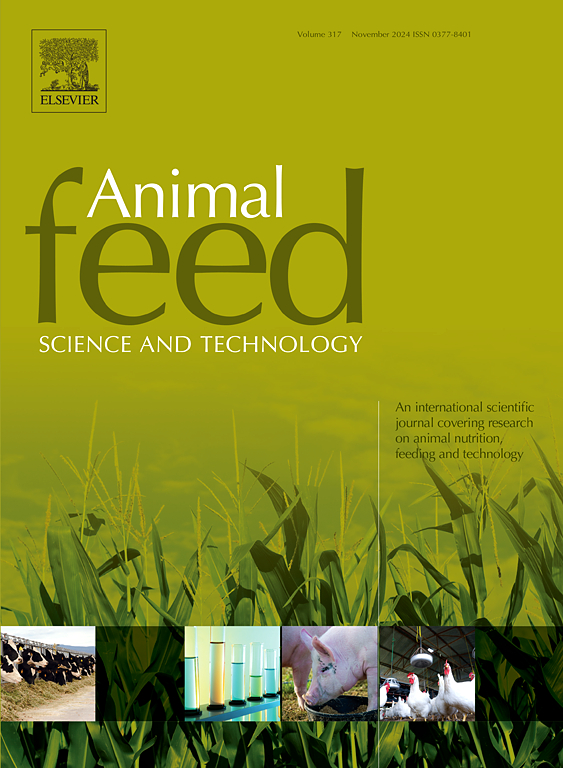Reviving hope: Phage therapy application for antimicrobial resistance in farm animal production over the past decade
IF 2.5
2区 农林科学
Q1 AGRICULTURE, DAIRY & ANIMAL SCIENCE
引用次数: 0
Abstract
The growing concern over antibiotic resistance on a global scale has led to a surge in phage therapy as a potential solution for difficult bacterial infections in animal production. Antibiotic resistance is a pressing public health concern affecting millions of people worldwide. Developing new antibiotics to combat this silent pandemic is complex, time-consuming process, and vulnerable to the rapid evolution of bacterial resistance. Viruses known as phages (bacteriophages) are living drugs that effectively target and destroy harmful bacteria and hold promise as valuable, green, and natural alternatives to antibiotics in food animal production. Phage therapy, which involves phages to eliminate bacterial infections, represents one of the most promising approaches to address the current threat of antibiotic resistance owing to its unique mechanisms of action. This review aims to summarize recent advances within the past years from 2014 to 2024 in the use of dietary phages as alternatives to antibiotics in food animal production. The application of phages, also known as phage therapy, occurred during the pre-antibiotic era. With antibiotics losing their effectiveness in treating zoonotic diseases and affecting the efficiency of food animal production, it is time to reconsider and renew our approach to phage therapy in the current post-antibiotic era. This review explores the development, advantages and challenges of phage therapy, its applications in food animal production and gaps for future research. It provides new insight into antibiotic resistance and the development of phage therapy cocktails that target specific antimicrobial resistance (AMR). This is important for ensuring sustainable antibiotic-free food animal production and protecting natural ecosystems.
复苏的希望:噬菌体治疗在过去十年中在农场动物生产中抗菌素耐药性的应用
全球范围内对抗生素耐药性的日益关注,导致噬菌体疗法作为动物生产中难治性细菌感染的潜在解决方案激增。抗生素耐药性是一个紧迫的公共卫生问题,影响着全世界数百万人。开发新的抗生素来对抗这种无声的大流行是一个复杂而耗时的过程,而且容易受到细菌耐药性快速演变的影响。被称为噬菌体(噬菌体)的病毒是一种有生命的药物,它能有效地靶向并摧毁有害细菌,有望在食用动物生产中成为抗生素的有价值的、绿色的、天然的替代品。由于其独特的作用机制,噬菌体治疗是解决当前抗生素耐药性威胁的最有希望的方法之一,涉及噬菌体消除细菌感染。本综述旨在总结2014年至2024年在食用动物生产中使用膳食噬菌体作为抗生素替代品的最新进展。噬菌体的应用,也被称为噬菌体治疗,发生在前抗生素时代。随着抗生素在治疗人畜共患病和影响食用动物生产效率方面的有效性下降,在当前的后抗生素时代,是时候重新考虑和更新我们的噬菌体治疗方法了。本文综述了噬菌体治疗的发展、优势和挑战、在食用动物生产中的应用以及未来研究的不足。它为抗生素耐药性和针对特异性抗菌素耐药性(AMR)的噬菌体治疗鸡尾酒的发展提供了新的见解。这对于确保可持续的无抗生素食用动物生产和保护自然生态系统至关重要。
本文章由计算机程序翻译,如有差异,请以英文原文为准。
求助全文
约1分钟内获得全文
求助全文
来源期刊

Animal Feed Science and Technology
农林科学-奶制品与动物科学
CiteScore
6.00
自引率
6.20%
发文量
266
审稿时长
3 months
期刊介绍:
Animal Feed Science and Technology is a unique journal publishing scientific papers of international interest focusing on animal feeds and their feeding.
Papers describing research on feed for ruminants and non-ruminants, including poultry, horses, companion animals and aquatic animals, are welcome.
The journal covers the following areas:
Nutritive value of feeds (e.g., assessment, improvement)
Methods of conserving and processing feeds that affect their nutritional value
Agronomic and climatic factors influencing the nutritive value of feeds
Utilization of feeds and the improvement of such
Metabolic, production, reproduction and health responses, as well as potential environmental impacts, of diet inputs and feed technologies (e.g., feeds, feed additives, feed components, mycotoxins)
Mathematical models relating directly to animal-feed interactions
Analytical and experimental methods for feed evaluation
Environmental impacts of feed technologies in animal production.
 求助内容:
求助内容: 应助结果提醒方式:
应助结果提醒方式:


